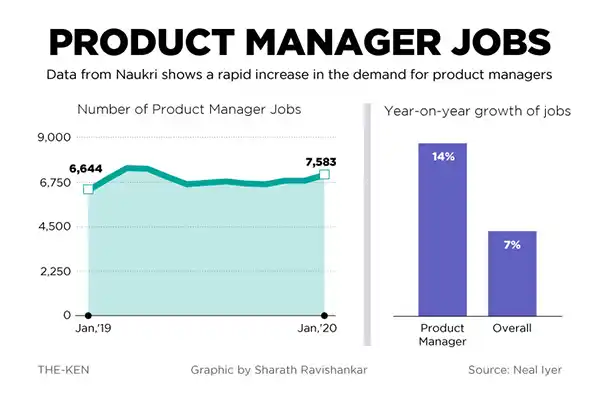Leveraging Harvestr for Effective Product Management
Key Takeaways
- Harvestr is a powerful tool that helps product managers in every step of production.
- They help streamline the development process by creating a roadmap that identifies the gaps and trends in the market.
- Challenges they face range from competing interests of stakeholders to balancing short and long-term goals.
- Successful product management allows businesses to experience positive customer experience.
Product managers have a lot of data to manage and utilize to make decisions that will lead to successful product launches.
The foremost significance of product management is understanding the customer churn rate. This is where Harvestr comes in. With its powerful analytical capabilities, it can help them identify customer churn rate trends, discover new opportunities to optimize the user experience, and more.
We’ll explore how you can use Harvestr to achieve better results.

Introducing Harvestr as a Solution
Harvestr is a fantastic tool that helps them to keep track of their projects and stay organized. It is like having a superpower! With its help, product managers can easily manage all aspects of its development, from idea generation to launch. This handy tool allows you to track user feedback, prioritize features, and collaborate with your team all in one place.
You can remember necessary tasks or keep track of important information. Try it out and see the magic happen!
Understanding the Importance of Product Management

The above data highlights how the role of a product manager is gaining momentum. Now let’s look at its significance and explore the necessary benefits for businesses.
Streamlining Product Development
Product Strategy:
It establishes a clear roadmap for product development, ensuring alignment with the company’s overall objectives. This enables businesses to stay focused and avoid getting trapped in random initiatives.
Market Research:
Product management teams identify gaps and trends within the target market by conducting thorough research. This information serves as a foundation for its innovation and guides decision-making processes.
Requirements Gathering:
A significant aspect of it is gathering detailed requirements from stakeholders such as customers, internal teams, and partners. These requirements are then translated into actionable plans for the development team.
Prioritization:
Product managers act as mediators between development, marketing, and sales teams. It prioritizes the most influential features and enhancements based on market demand and business goals.
Maximizing User Experience
User-Centric Approach:
Successful product management involves understanding users’ needs, preferences, and pain points. They ensure that the result fulfills user expectations and creates a delightful experience, by conducting user research and incorporating feedback.
Usability Testing:
Product managers collaborate with design and development teams to conduct rigorous usability testing. This iterative process helps identify and address any usability issues early on, minimizing the chances of user dissatisfaction.
Continuous Improvement:
Through ongoing analysis of user feedback and market trends, they identify areas of improvement to enhance the product’s user experience. This includes addressing performance issues, incorporating new features, or even pivoting its strategy if necessary.
Driving Business Growth
Competitive Advantage:
Effective product management enables companies to differentiate themselves from competitors by offering unique features or addressing niche market requirements. Product managers can position the outcome strategically to gain a competitive edge, by understanding the retail landscape.
Revenue Generation:
They are pivotal in identifying new revenue streams or optimizing existing ones. They develop pricing strategies by analyzing market trends and gathering customer insights that maximize profitability while ensuring the outcome remains attractive to customers.
Market Expansion:
A well-executed strategy can pave the way for market expansion by identifying new target audiences or exploring untapped segments. This allows businesses to grow their customer base and increase retail share.
There has been a drastic rise in the change of career paths. Instead of choosing traditional jobs, a high number of students are choosing to opt for product management roles. Recently, the Wall Street Journal reported that on average, 7% of Harvard Business School grads chose this role.

Challenges in Product Management
We will explore some of these challenges and provide insights on navigating them successfully.
Balancing Stakeholder Expectations
- Understanding and managing the expectations of different stakeholders can be overwhelming for product managers.
- Stakeholders often have competing interests, and finding a balance that aligns with the overall outcome vision is significant.
- Effective communication, active listening, and regular updates help address conflicting expectations and foster collaboration.
Adapting to Changing Market Dynamics
- The market landscape constantly evolves, and product managers must stay abreast of emerging trends, technologies, and competitive landscapes.
- Adapting to changing market dynamics requires a proactive approach, continuous learning, and the ability to pivot strategies and plans when necessary.
Collaboration and Alignment
- They work closely with cross-functional teams, including engineers, designers, marketers, and salespeople.
- Ensuring effective collaboration and alignment among diverse teams can be challenging, but is pertinent for delivering a cohesive and successful product.
Balancing Short-term Wins with Long-term Vision
- Product managers face the challenge of balancing immediate business needs with the long-term strategic vision for an outcome.
- Striking the right balance between short-term wins and long-term goals requires careful prioritization and a deep understanding of the product strategy.
Knowledge Bubble: The top most challenges that product managers face are lack of time, lack of role clarity, and competing objectives in the organization.
Conclusion
Harvestr is a great tool for managing products. It helps you organize everything and stay on track. With good product management, you can ensure your outcome is successful and customers are happy.
Remember, it is vital because it helps you ensure that the result is the best it can be. You may face challenges, but with Harvestr, you can overcome them and launch a successful outcome.
So, try Harvestr today and see how it can help you with your product management needs!








